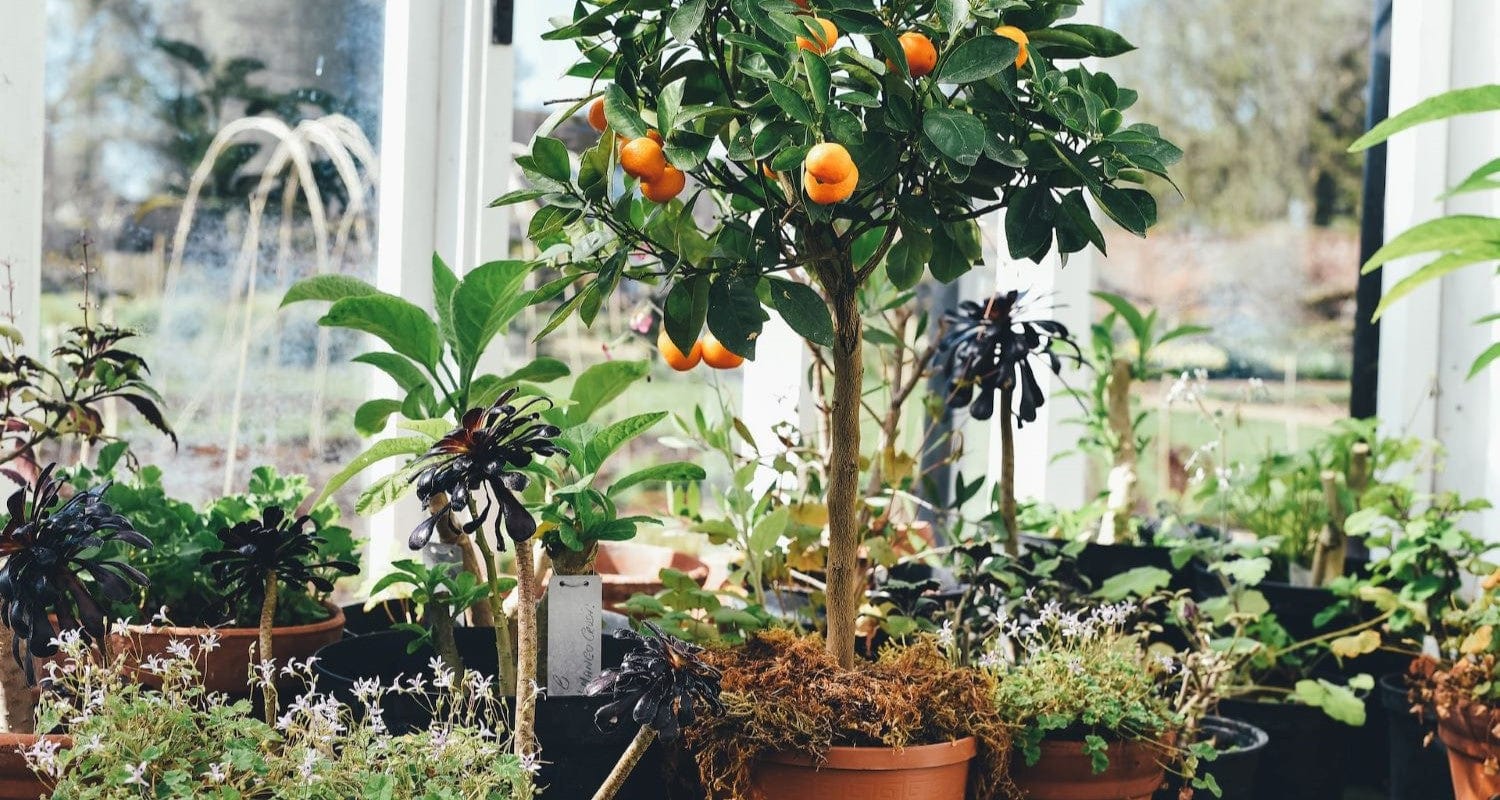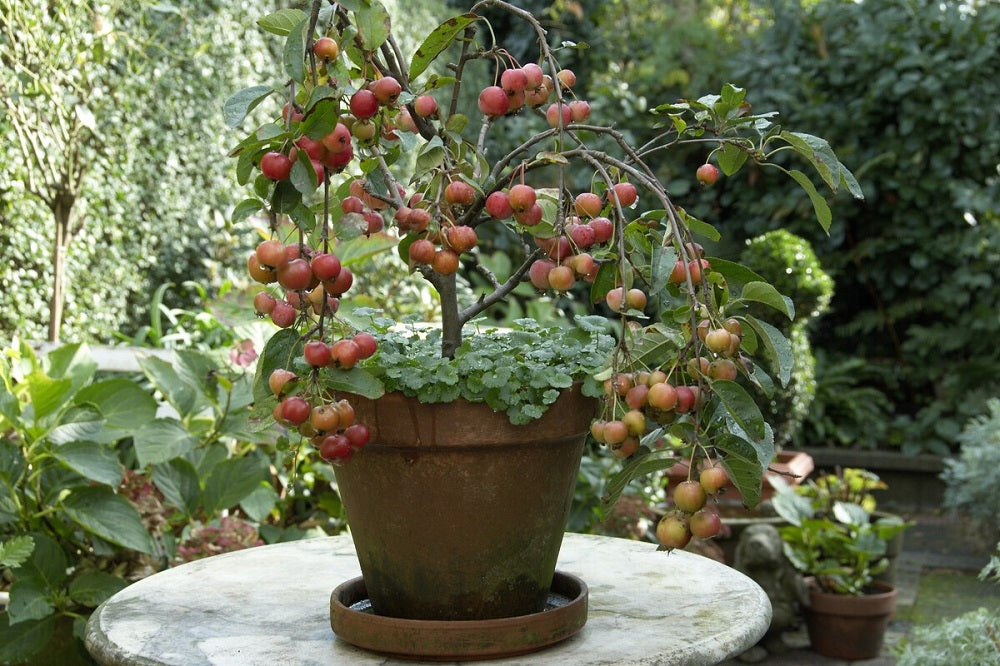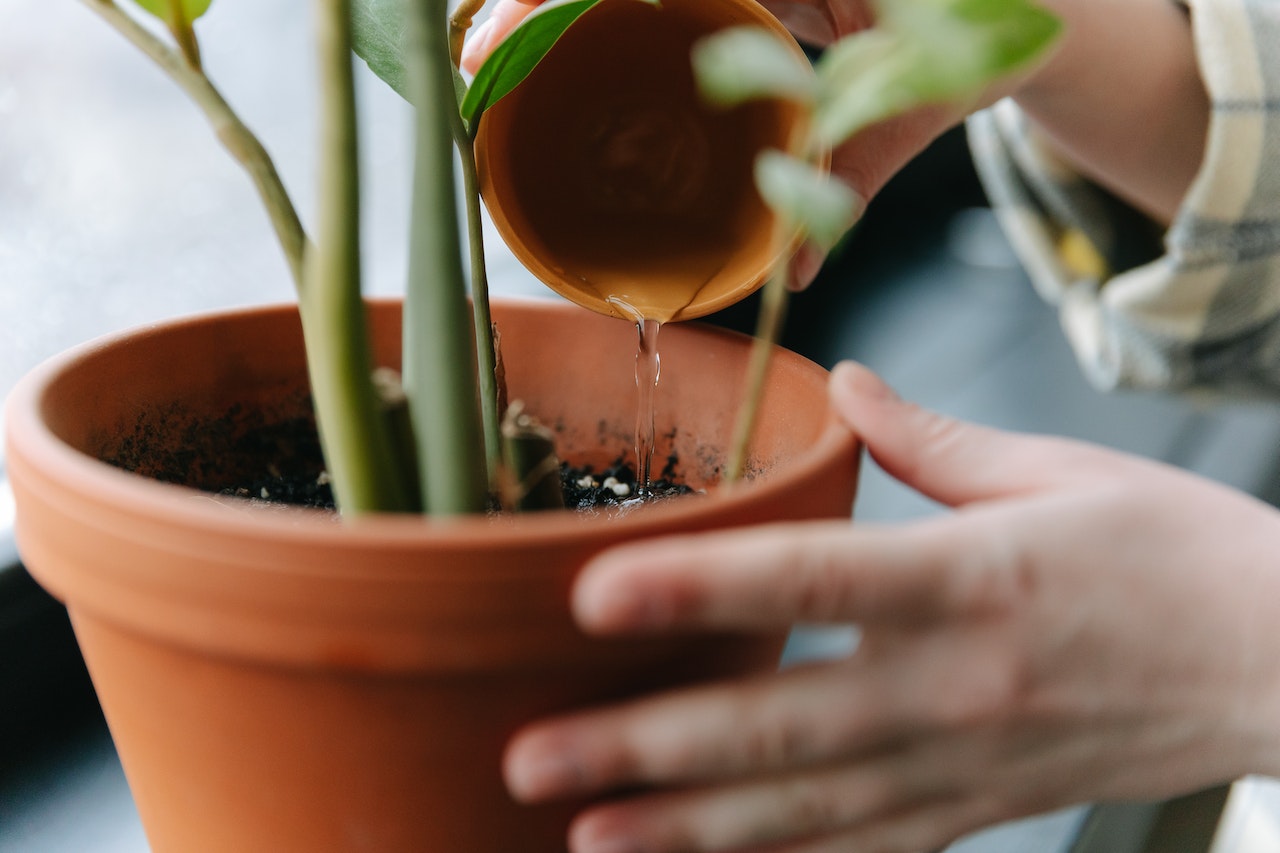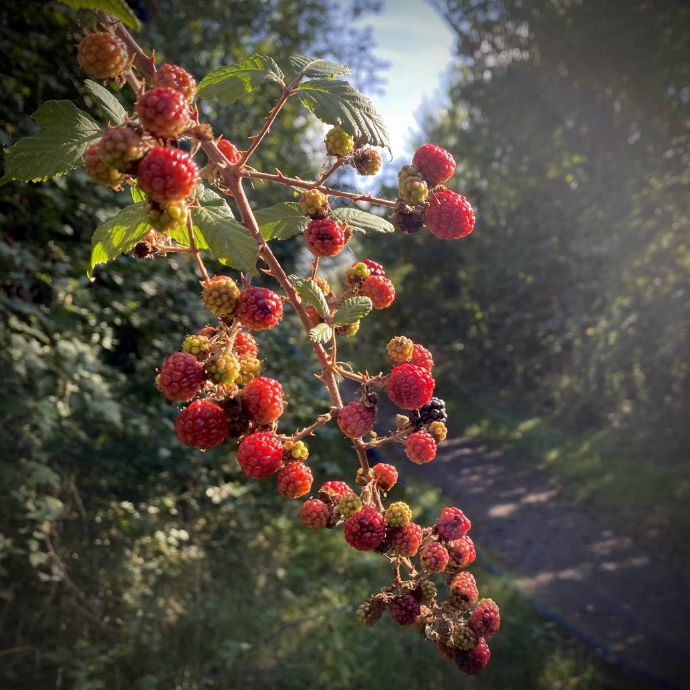Advice & Inspiration
Growing Fruit Trees in Pots

There are many great reasons to try growing fruit trees in pots, especially if space is tight in your garden or you’re gardening on a balcony, a patio or in a yard. Trees in pots are less susceptible to pests and diseases, you can move them around according to where the sun is (or just because you want to) and of course you can always bring them indoors if the weather looks a little frosty. Whatever your reason, it’s the ideal way to grow full sized fruit in small spaces. Read on for all you need to know.
Jump to:
- Choosing your tree
- Choosing your pot
- Soil
- Positioning
- Watering
- Feeding
- Pruning
- Pest and disease control
- Frost protection
Choosing your tree
What are the best fruit trees to grow in pots? There are so many varieties now that have been specially bred for pots and small spaces, that it can be difficult to choose - luckily our fruit tree growers John and Josh are on hand to help. “I’d go for a dwarf apple like Discovery, or a Fig,” says John, “and you can’t go wrong with a Conference pear.” Josh favours nectarines, apricots and peaches. “Growing in a pot means you avoid one of the main problems with peach trees which is leaf curl. If they’re in pots, you’re watering them from the base and it’s not gathering on the leaves, which is the issue with trees in the ground - it’s also a great way to protect the flowers from frost and get a better crop.” If in doubt, always look for a tree described as dwarfing, semi dwarfing or patio sized and if you only have space for one, choose a self fertile variety that will crop without needing to be pollinated by another.
Choosing your pot
When planting fruit trees in pots, choose the biggest container you can find (at least 45-50cm wide and deep - larger if possible) and repot the tree every two to three years if needed. It’s a good idea to put your pot on a wheeled base before filling it, then you can move the tree around more easily (for instance, bringing it indoors over the winter) if you need to. Make sure there are plenty of holes in the bottom of the pot to allow excess water to drain out - if you don’t, it could lead to waterlogging and cause the roots to rot.

The right soil
Make sure your soil is weed-free, full of nutrients and drains well. To make sure of this, you can add some compost and a little horticultural grit or perlite to the planting hole. Check your trees every 2-3 years to see if they need repotting, and replace the compost at the same time.
The best position
Most fruit trees need to be grown in a sunny, sheltered area - a patio is ideal - where they’ll get a full six to eight hours of sunlight every day in spring and summer. The most needy in terms of warmth are peaches, citrus trees and cherries, but hardier trees like apples, pears and plums can handle a little light shade in the afternoon.
Watering
Potted trees will need to be kept well watered, as the rain can’t reach them as easily as trees in the ground. In summer this will probably be needed every day, but avoid waterlogging by feeling the compost before you water - the soil shouldn’t be allowed to dry out completely, but the first 1cm of the surface should feel dry before you water again. Try to water at the base of the plant rather than from above, to avoid the risk of soil or water borne diseases on the leaves.

Feeding
Fruit trees grown in pots will need a helping hand with nutrients if they’re to crop to their full potential. When planting your tree, use a rooting hormone such as Rootgrow and add plenty of good quality compost or well rotted manure to the pot. Give it a starter feed of general purpose granular fertiliser and repeat this every spring when the blossom starts to develop. Adding a mulch of compost, bark chips or similar every autumn will help the tree to retain nutrients and water in the soil, as well as suppressing weeds.
Pruning
You don’t have to prune your fruit trees, but doing so can make a real difference in terms of health, shape, size and cropping.
Make sure to check out our growers’ tips on pruning apricots, and more - you’ll find them all on our website.

Pest and disease control
Growing in pots makes pest control simple - you don’t have to worry about soil-borne diseases or fungal spores from overcrowded beds. Keep a close eye out for fruit tree pests and diseases as it’s much easier to control them when they’re spotted early. The main issue you might have is with birds stealing the fruit - to avoid this, try netting, motion activated sprinklers or a good old fashioned scarecrow.
Frost protection
It can be much easier to protect your fruit trees from freezing temperatures if they’re in pots.
Apples, cherries, plums, figs and pears are hardy enough to survive the winter without protection, but more tender fruits like citrus and stone fruits like peaches will need a helping hand.
“In places like Italy, Spain and Greece they’re fine outdoors all year round,” says John, “but in our climate it’s much easier to protect them from the frost if they’re in a pot. You can leave them outside all summer, then bring them indoors through the winter.”
If the pots are too large to move, you can wrap your tree in horticultural fleece or bubble wrap for the winter and leave it in situ.




















